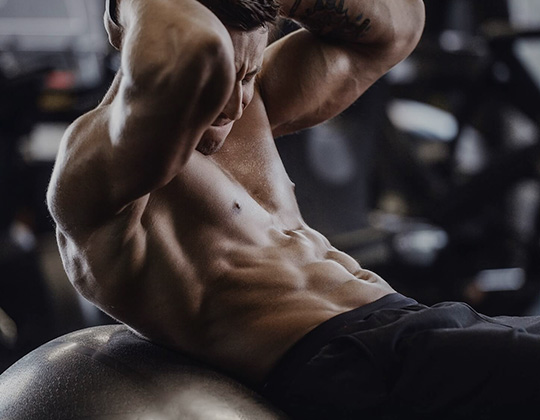
Instructions:
Key Points & Tips:
Benefits:
Muscle Action & Joint Action:
Concentric (Lifting):
Eccentric (Lowering):
Form Focus:

Crunches
Type: Isolation Exercise
Primary Muscles Targeted: Rectus Abdominis (Upper Abdominals)
Secondary Muscles Targeted: Obliques, Transverse Abdominis (Core Stabilization) Equipment: Bodyweight (Optional: Exercise Mat, Weighted Plate)
Level: Beginner to Advanced
Muscle Roles:
Instructions:
Key Points & Tips:
Benefits:
Muscle Action & Joint Action:
Concentric (Lifting):
Eccentric (Lowering):
Form Focus:

Reverse Crunches
Type: Isolation Exercise
Primary Muscles Targeted: Lower Rectus Abdominis (Lower Abs)
Secondary Muscles Targeted: Transverse Abdominis, Obliques, Hip Flexors
Equipment: Bodyweight (Optional: Exercise Mat)
Level: Beginner to Advanced
Muscle Roles:
Instructions:
Key Points & Tips:
Benefits:
Muscle Action & Joint Action:
Concentric (Lifting):
Eccentric (Lowering):
Form Focus:

Full Body Crunch
Type: Compound Exercise
Primary Muscles Targeted: Rectus Abdominis (Upper and Lower Abs) Secondary Muscles Targeted: Obliques, Hip Flexors, Transverse Abdominis Equipment: Bodyweight (Optional: Exercise Mat)
Level: Beginner to Intermediate
Muscle Roles:
Instructions:
Key Points & Tips:
Benefits:
Muscle Action & Joint Action:
Concentric (Lifting & Twisting):
Eccentric (Lowering):
Form Focus:

Twisting Crunch
Type: Isolation Exercise
Primary Muscles Targeted: Obliques (Internal & External)
Secondary Muscles Targeted: Rectus Abdominis, Transverse Abdominis, Hip Flexors Equipment: Bodyweight (Optional: Exercise Mat)
Level: Beginner to Intermediate
Muscle Roles:
Instructions:
Key Points & Tips:
Benefits:
Muscle Action & Joint Action:
Concentric (Twisting & Knee Drive):
Eccentric (Returning to Start):
Form Focus:

Bicycle Crunch
Type: Isolation Exercise
Primary Muscles Targeted: Obliques (Internal & External), Rectus Abdominis Secondary Muscles Targeted: Transverse Abdominis, Hip Flexors Equipment: Bodyweight (Optional: Exercise Mat)
Level: Beginner to Advanced
Muscle Roles:
Instructions:
Key Points & Tips:
Benefits:
Muscle Action & Joint Action:
Concentric (Crunching Up):
Eccentric (Lowering Down):
Form Focus:

Side Crunch
Type: Isolation Exercise
Primary Muscles Targeted: Obliques (Internal & External)
Secondary Muscles Targeted: Rectus Abdominis, Transverse Abdominis Equipment: Bodyweight (Optional: Exercise Mat)
Level: Beginner to Advanced
Muscle Roles:
Instructions:
Key Points & Tips:
Benefits:
Muscle Action & Joint Action:
Concentric (Legs Moving Upward):
Eccentric (Legs Moving Downward):
Form Focus:

Scissors
Type: Isolation Exercise
Primary Muscles Targeted: Lower Abdominals (Rectus Abdominis – Lower Portion) Secondary Muscles Targeted: Hip Flexors (Iliopsoas), Transverse Abdominis, Obliques Equipment: Bodyweight (Optional: Exercise Mat)
Level: Beginner to Advanced
Muscle Roles:
Instructions:
Key Points & Tips:
Benefits:
Muscle Action & Joint Action:
Concentric (Crunching Down):
Eccentric (Returning to Start Position):
Form Focus:

Cable Crunches
Type: Isolation Exercise
Primary Muscles Targeted: Rectus Abdominis
Secondary Muscles Targeted: Obliques, Transverse Abdominis
Equipment: Cable Machine with Rope Attachment
Level: Beginner to Advanced
Muscle Roles: